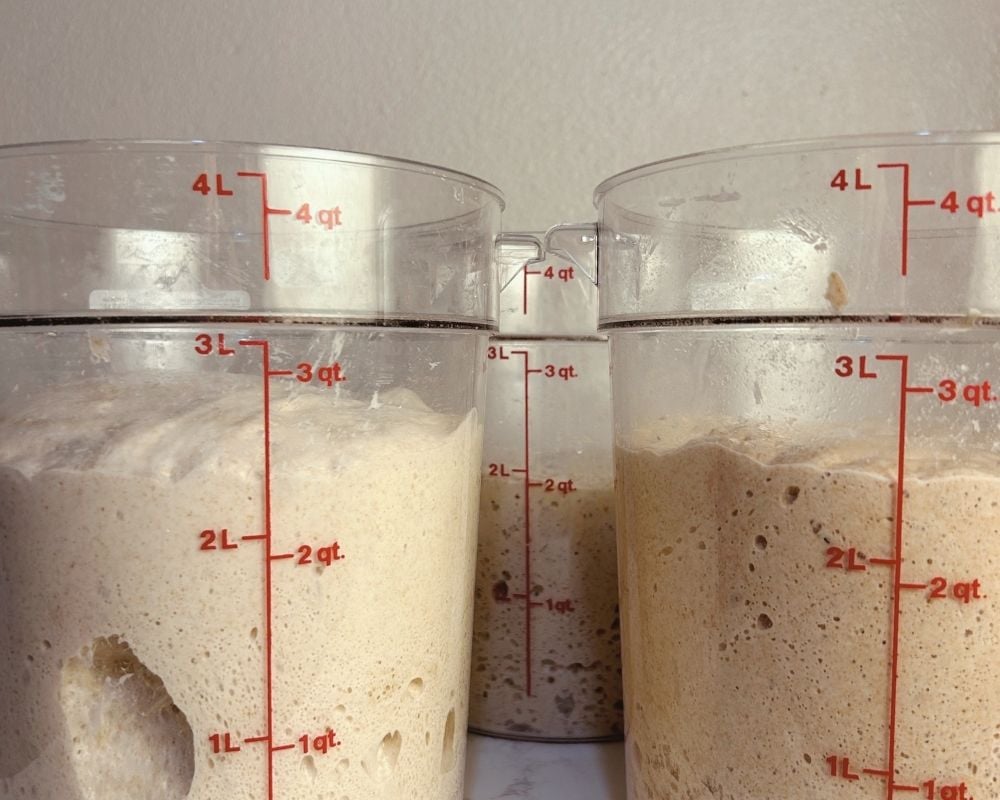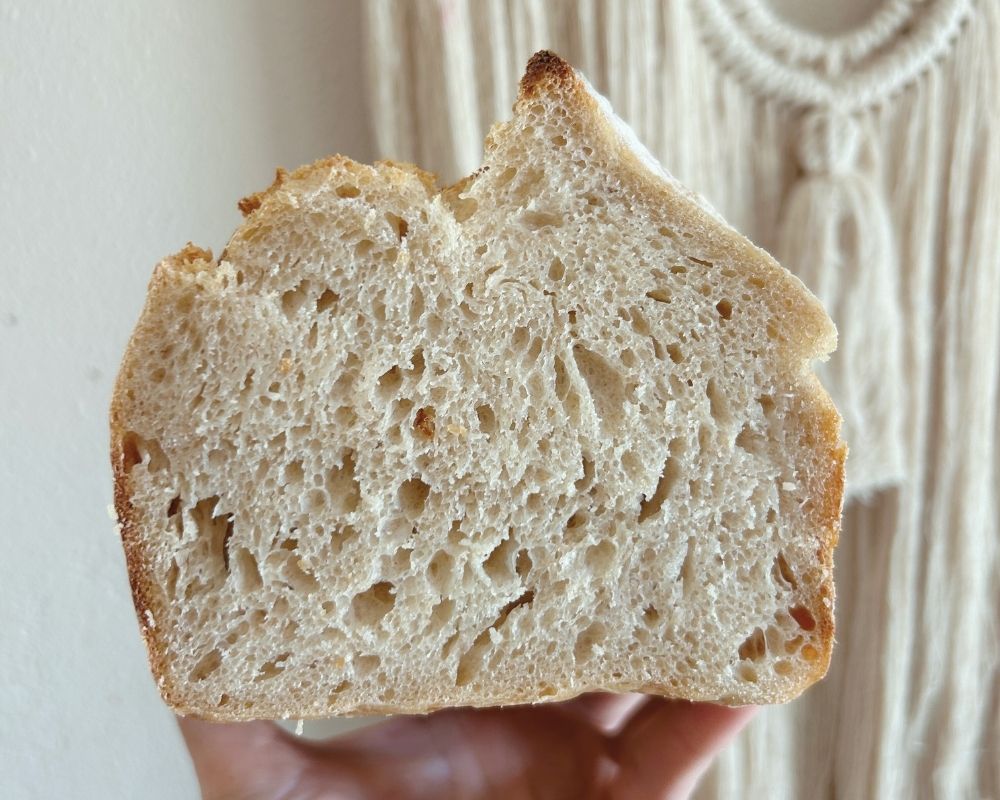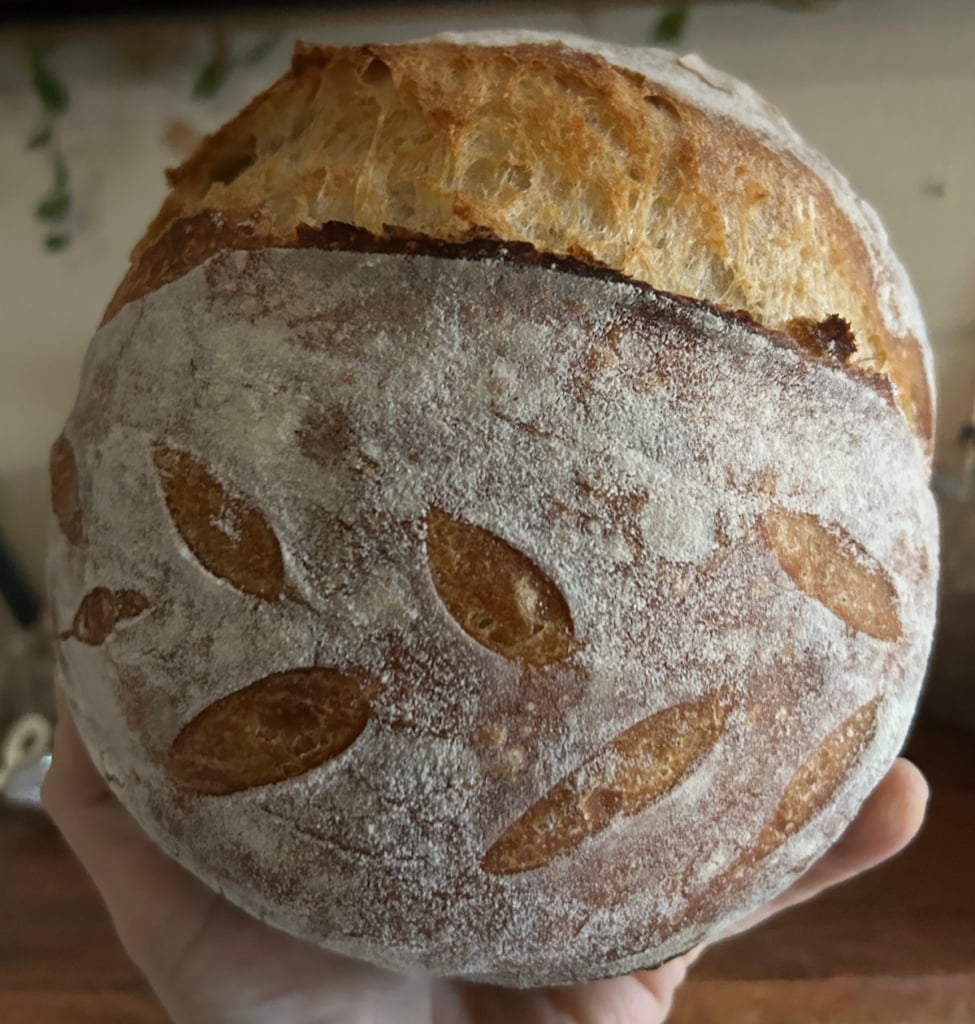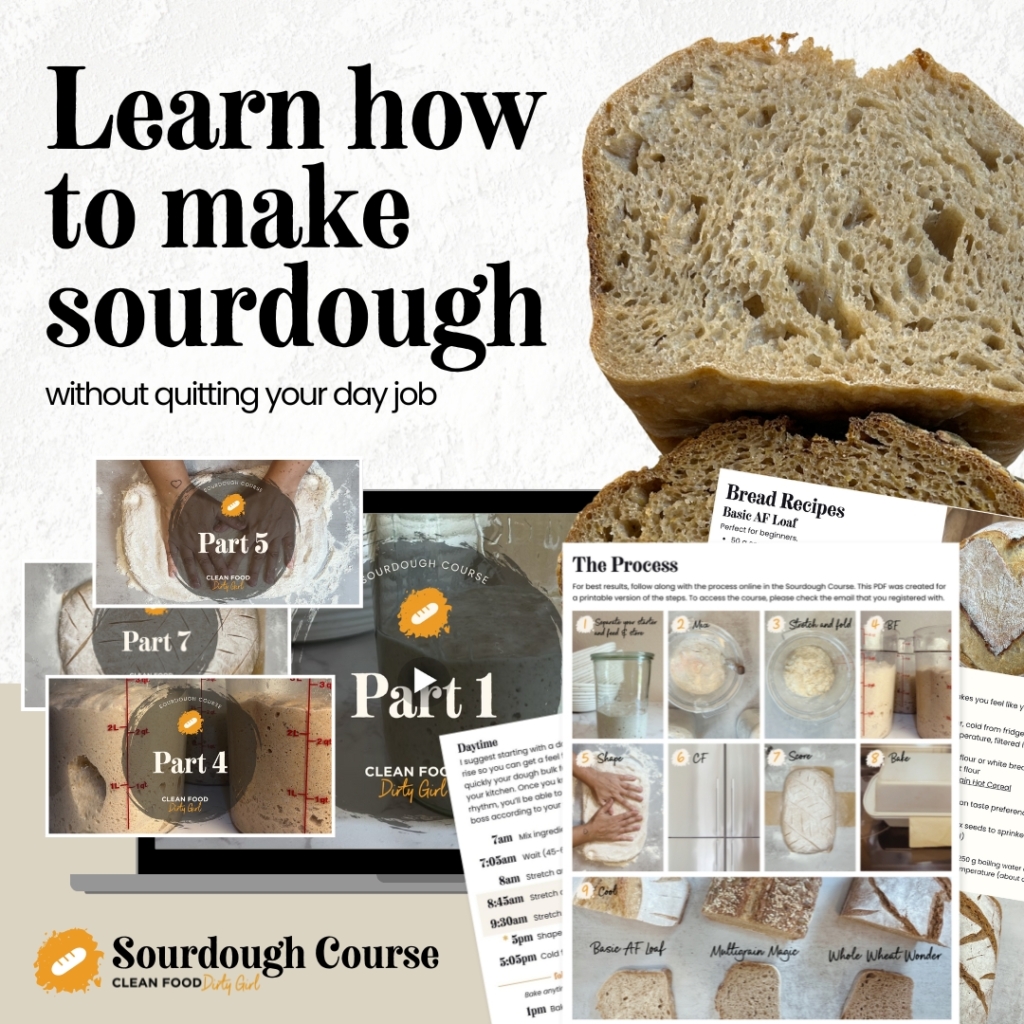The Health Benefits of Long-Fermented Sourdough Bread

By Team Dirty - Brittany
Nov 19, 2025,
By Team Dirty - Brittany
Nov 19, 2025,
Long-fermented sourdough bread isn’t just damn delicious. It’s easier to digest than regular bread, nutrient-rich, and some people with gluten sensitivities can actually tolerate it. Let’s get down and dirty about why sourdough is so f**ing special.
What does long-fermented mean?
“Long-fermented” refers to the process of letting bread dough rest and ferment for an extended period, at least 8 hours but up to 3 days, before baking. During this time, wild yeast and lactic acid bacteria slowly break down the flour, developing complex flavor, better texture, and improved digestibility. Sourdough is the most popular bread for long fermentation.

Most commercial bread uses rapid-rising yeast and the dough is allowed to ferment for a few hours, if that. While this makes baking fast and efficient, it doesn’t give yeast or bacteria time to develop much flavor or break down gluten and starches. The result is bread that may rise quickly but lacks the tang, texture, and digestibility of long-fermented loaves like sourdough.
What is sourdough?
When you make sourdough at home, you skip all the junk like preservatives, weird dough conditioners, added sugar, and oil. Just four simple, whole ingredients: flour, water, sourdough starter, and salt.
Check out this side-by-side comparison of your average loaf of bread from a grocery store and a loaf of homemade sourdough.

Naturally leavened
You might have noticed yeast wasn’t included in my list of ingredients for sourdough. That’s because sourdough is naturally leavened, meaning it rises thanks to wild yeast and friendly bacteria that hang out in your flour and kitchen. When you feed your starter, these little microbes go to work:
- Wild yeast in the starter consumes the sugars in the flour and produces carbon dioxide, which makes your dough rise.
- The lactic acid bacteria break down the sugars and add that signature tang.
Slow fermentation gives the bacteria and yeast time to transform your dough. They break down complex carbohydrates and proteins, which means they’re easier to digest.
Every time you mix, stretch, and shape the dough, more wild yeast and beneficial bacteria from your environment join the fermentation party. This creates a loaf that’s a bubbling collab between you, your flour, and the microbes around you.
Healthy? Check. Delicious? Hell yes. Your taste buds will thank you.
Why sourdough is easier to digest
Think of fermentation as a mini digestion system that happens before you even take a bite. During that slow rise, the bacteria in your starter produce enzymes that:
- Break down gluten proteins, making them less likely to cause irritation.
- Reduce phytic acid, which is a natural compound in flour that blocks nutrient absorption.
This means you get bread that’s not only easier on your gut, but also more nourishing with minerals like zinc, iron, and magnesium becoming easier for your body to use.
Incorporating more whole grains

When you bake your own sourdough, you control everything that goes in. You can work in organic, whole-grain flours like rye, spelt, einkorn, Kamut, or whole wheat, which boost fiber and nutrients while still giving you that soft, chewy crumb.
Impact on blood sugar
During long fermentation, the wild yeast and bacteria pre-digest some of the starches, which means your body absorbs the sugars more slowly. This leads to a steadier blood sugar response, which is why many people who struggle with blood sugar swings find that real, long-fermented sourdough feels better in their bodies.
Impact on satiety

With all these benefits, it’s no wonder sourdough keeps you feeling fuller longer! Whether it’s sourdough pancakes for breakfast or a thick slice for your afternoon avocado toast, many people notice that a slice of real, long-fermented sourdough satisfies hunger far better than commercial breads.
I’m gluten-sensitive. Can I try sourdough?
For some people, the answer is yes… with a few important notes.
DISCLAIMER: Wheat-based sourdough still contains gluten, and if you have celiac disease, it isn’t safe in any form. If this is you, do not follow this guidance or any recipes in our Sourdough Course.
When I first started making sourdough bread, my youngest was in daycare. I knew my daycare lady was gluten-free, so I never thought to offer her any of my bread. But when she heard I was making sourdough, her eyes lit up. She asked if I’d make her a loaf and let it ferment as long as possible. So I did. I left the dough in the cold ferment stage for two full days (48 hours), then baked it and brought her a loaf. She was thrilled… and she was able to enjoy it without any bathroom emergencies!
Since then, I’ve been baking her my Basic AF loaf from the Sourdough Course. With that, we played around with adding more whole grains and freshly milled flour, but even with a long ferment, it tends to bother her a little, so sticking with the Basic AF loaf is important.
Sidenote: Our Co-Founder, Molly Patrick, is gluten-sensitive, but she is going to try a long-fermented loaf later this year when she visits. We’ll update here with details! Hopefully delicious details, LOL.
With that, if you’re gluten sensitive but not allergic, you might be able to digest long-fermented sourdough
Everyone’s body is different. If you’re gluten sensitive, test carefully and mindfully:
- Start small. Just a bite or two of a slice, then wait 24 hours and notice how you feel.
- Only test real, naturally leavened, long-fermented sourdough made from flour, water, and salt. Skip the commercial “sourdough-style” loaves that use added yeast, citric acid, or vinegar.
- Use organic flour when possible.
- Start with minimal whole grains or 100% all-purpose flour, and slowly work in some other grains like einkorn or spelt, if you can handle it.
- Keep a simple food journal to track your body’s response. Hello, dough-pamine diary!
Mindful AF sourdough
Beyond being better for your body, sourdough is good for your mind. There’s something grounding about mixing dough, watching it bubble and rise, adding a little artistic touch as you score the loaf, and pulling a golden loaf from your oven.

Excited to try your hand at sourdough?
If your mouth is watering and your curiosity is piqued, I’d love to show you how to make your own bread that loves you back.
This course is packed with step-by-step guidance, videos, recipes, and tips that make sourdough totally doable, even if you’ve never baked a loaf before. If you can stir flour and water together, you can do this.
Love the food that loves you back
Get instant access to thousands of plant-based recipes and meal plans, no credit card or perfection required.













